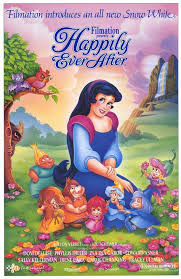
Snow White and the Seven Dwarfs is a 1937 American animated musical fantasy film produced by Walt Disney Productions and released by RKO Radio Pictures. Based on the 1812 German fairy tale by the Brothers Grimm, it is the first animated feature film produced in the United States and the first cel animated feature film. The production was supervised by David Hand, and the film's sequences were directed by Perce Pearce, William Cottrell, Larry Morey, Wilfred Jackson, and Ben Sharpsteen.
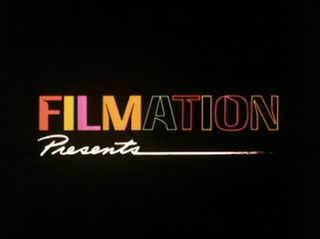
Filmation Associates was an American production company that produced animation and live-action programming for television from 1963 until 1989. Located in Reseda, California, the animation studio was founded in 1962. Filmation's founders and principal producers were Lou Scheimer, Hal Sutherland and Norm Prescott.

"Snow White" is a German fairy tale, first written down in the early 19th century. The Brothers Grimm published it in 1812 in the first edition of their collection Grimms' Fairy Tales, numbered as Tale 53. The original German title was Sneewittchen; the modern spelling is Schneewittchen. The Grimms completed their final revision of the story in 1854, which can be found in the 1857 version of Grimms' Fairy Tales.
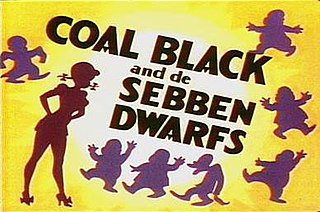
Coal Black and de Sebben Dwarfs is a 1943 Merrie Melodies animated cartoon directed by Bob Clampett. The short was released on January 16, 1943.

Beauty and the Beast: The Enchanted Christmas is a 1997 direct-to-video animated Christmas musical fantasy film produced by Walt Disney Television Animation. It is the follow-up to Disney's 1991 animated feature film Beauty and the Beast. The film sold 7.6 million VHS tapes in 1997. This is the first of two sequels to Beauty and the Beast that were released, with the other being Belle's Magical World (1998).
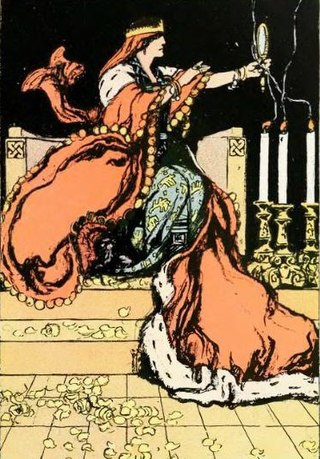
The Evil Queen, also called the Wicked Queen or just the Queen, is a fictional character and the main antagonist of "Snow White", a German fairy tale recorded by the Brothers Grimm; similar stories exist worldwide. Other versions of the Queen appear in subsequent adaptations and continuations of the fairy tale, including novels and films. One particularly notable version is Disney's depiction, sometimes known as Queen Grimhilde. The character has also become an archetype that inspired unrelated works.
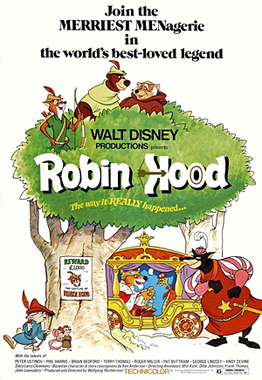
Robin Hood is a 1973 American animated musical adventure comedy film produced by Walt Disney Productions and released by Buena Vista Distribution. Produced and directed by Wolfgang Reitherman, it is based on the English folktale "Robin Hood". The story follows the adventures of Robin Hood, Little John, and the inhabitants of Nottingham as they fight against the excessive taxation of Prince John, and Robin Hood wins the hand of Maid Marian. The film features the voices of Brian Bedford, Phil Harris, Peter Ustinov, Pat Buttram, Monica Evans, Terry-Thomas, Roger Miller, and Carole Shelley.

Marc Fraser Davis was a prominent American artist and animator for Walt Disney Animation Studios. He was one of Disney's Nine Old Men, the famed core animators of Disney animated films, and was revered for his knowledge and understanding of visual aesthetics. After his work on One Hundred and One Dalmatians he moved to Walt Disney Imagineering to work on rides for Disneyland and Walt Disney World before retiring in 1978.

Happily N'Ever After is a 2006 animated fantasy adventure comedy film directed by Paul J. Bolger, produced by John H. Williams, and written by Rob Moreland. It is inspired by fairy tales of the Brothers Grimm and Hans Christian Andersen and loosely based on the 1999 animated German television series Simsala Grimm. The title is the opposite of a stock phrase, happily ever after; the name is contracted with an apostrophe between the N and the E. The film stars the voices of Sarah Michelle Gellar, Freddie Prinze, Jr., Andy Dick, Wallace Shawn, Patrick Warburton, George Carlin, and Sigourney Weaver. This film was one of Carlin's final works before he died.
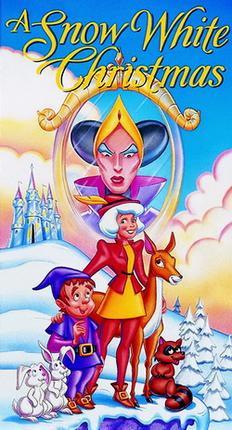
A Snow White Christmas is a Christmas animated television special produced by Filmation and telecast December 19, 1980, on CBS. The special is a sequel to the fairy tale "Snow White", unrelated to Filmation's other sequel to "Snow White" titled Happily Ever After (1989), which ignores everything from this film.

Snow White's Enchanted Wish is a dark ride at the Disneyland, Tokyo Disneyland, and Disneyland Paris theme parks, and formerly at the Magic Kingdom. Located in Fantasyland, it is one of the few remaining attractions that was operational on Disneyland's opening day in 1955, although it has seen several different redesigns over its history. The ride's story is based on Disney's 1937 film, Snow White and the Seven Dwarfs, their first animated feature film.
"Someday My Prince Will Come" is a song from Walt Disney's 1937 animated movie Snow White and the Seven Dwarfs. It was written by Larry Morey (lyrics) & Frank Churchill (music), and performed by Adriana Caselotti. It was also featured in the 1979 stage adaptation of the 1937 animated musical movie. In AFI's 100 Years...100 Songs, it was ranked the 19th greatest film song of all time.

The Seven Dwarfs are a group of seven fictional dwarfs that appear in the 1812 fairy tale Snow White by the Brothers Grimm and other renditions and adaptations.

Snow White is a fictional character and a main character from Walt Disney Productions' first animated feature film Snow White and the Seven Dwarfs (1937). She was originally voiced by Adriana Caselotti. The character of Snow White was derived from a fairy tale known from many countries in Europe with the best-known version being the 1812 tale collected by the Brothers Grimm.
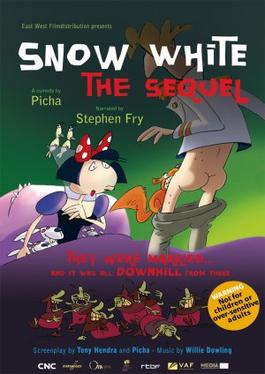
Snow White: The Sequel - is a 2007 Belgian/French/British adult animated comedy film directed by Picha. It is based on the fairy tale of Snow White and intended as a sequel to Disney's classic animated adaptation. However, like all of Picha's cartoons, the film is actually a sex comedy featuring a lot of bawdy jokes and sex scenes.
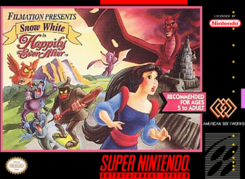
Snow White: Happily Ever After is a North America-exclusive video game that was released in 1994 for the Super Nintendo Entertainment System. The game was targeted for female video game players. It is based on the 1989 animated Filmation film Happily Ever After, and not the 1937 Disney film. A Sega Genesis version was planned but never released.

The Goddess of Spring is a 9-minute Silly Symphonies animated Disney short film. The Symphony is imbued with operatic themes and is often cited as melodramatic. It was released in 1934, and its production was important to the future development of Disney's Snow White and the Seven Dwarfs animation. Each Silly Symphony was a technological marvel at the time and proceeded to further advancements in the animation industry.
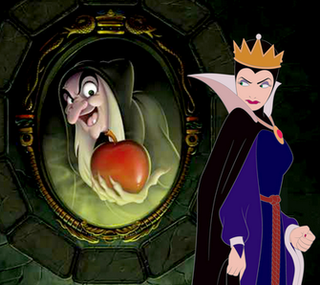
The Evil Queen, also known as the Wicked Queen, Queen Grimhilde, or just the Queen, is a fictional character who appears in Walt Disney Productions' first animated feature film Snow White and the Seven Dwarfs (1937) and remains a villain character in their extended Snow White franchise. She is based on the Evil Queen character from the 1812 German fairy tale "Snow White".
Snow White is a Disney media franchise that began in 1937 with the theatrical release of Snow White and the Seven Dwarfs. It is based on the 1812 fairy tale by the Brothers Grimm.
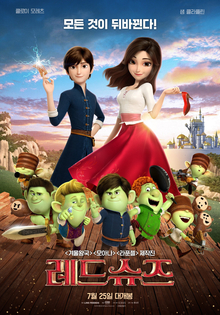
Red Shoes and the Seven Dwarfs, known in Korean as simply Red Shoes, is a 2019 English-language South Korean animated fantasy film produced by Locus Corporation. It is based on the 1812 German-language fairy tale "Snow White" by the Brothers Grimm, and its name is derived from the 1845 Danish fairy tale The Red Shoes by Hans Christian Andersen. The film features the voices of Chloë Grace Moretz, Sam Claflin, Gina Gershon, Patrick Warburton, and Jim Rash.
